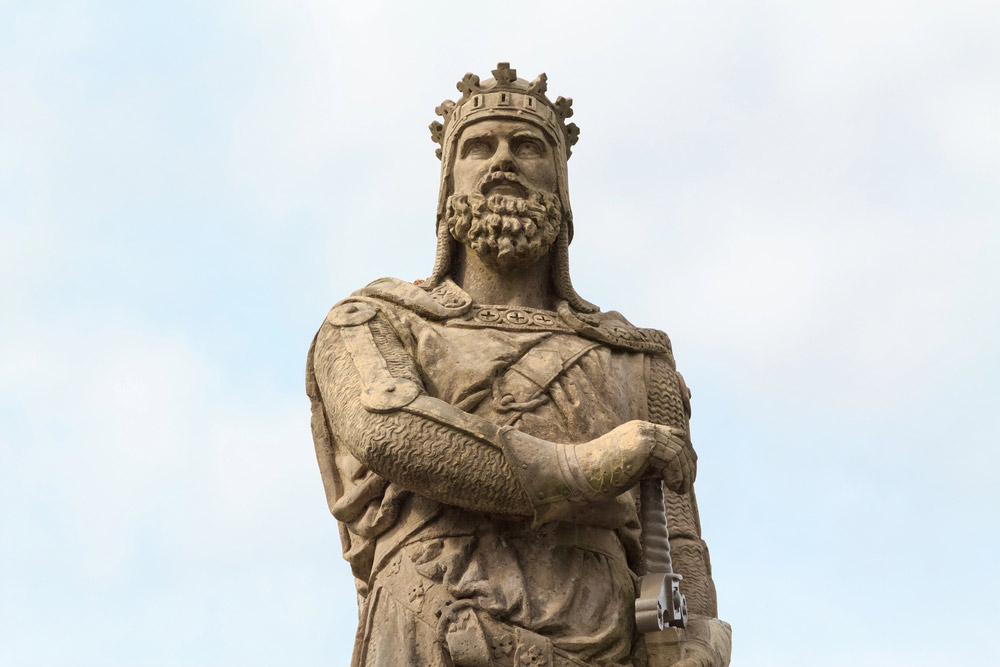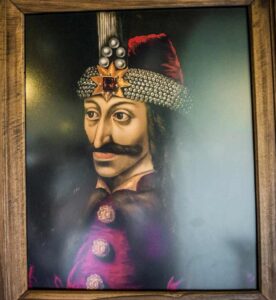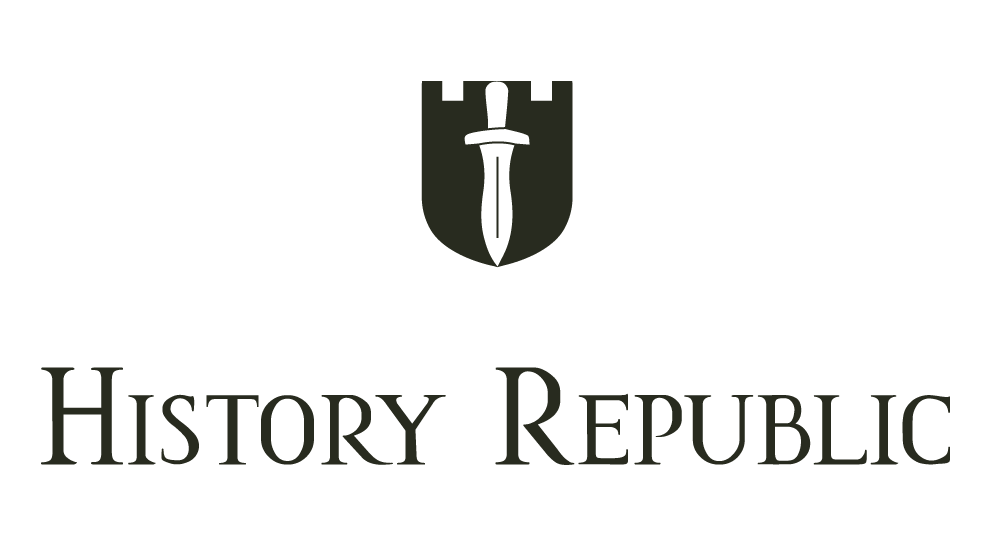There are moments in history when a single figure becomes the axis around which the fate of a nation pivots. In the case of Scotland, Robert the Bruce—later crowned Robert I of Scotland—was precisely that kind of figure.
He was neither the first nor the only leader to challenge English domination, but he ultimately became the person who steered Scotland to a lasting independence recognized by the world in his time.
To truly appreciate how Robert the Bruce’s story became synonymous with Scottish nationhood, we need to step back to the chaotic backdrop of medieval Britain, where kings, nobles, and entire nations wrestled for power.
The Scottish-English Tensions Before Robert the Bruce
Long before Robert the Bruce was even born, the relationship between Scotland and England was fraught with tension. The 12th and 13th centuries saw the English crown assert increasing influence over neighboring realms, often testing the sovereignty of smaller kingdoms like Scotland and Wales.
During this era, feudal loyalties were complex. Scottish kings sometimes paid homage to English monarchs for certain lands, but that didn’t necessarily translate to subservience. It was more akin to a patchwork of overlapping claims that changed hands through marriages, treaties, and occasionally war.
By the late 13th century, the biggest catalyst for Scottish unrest was the question of succession. When Scotland’s King Alexander III died unexpectedly in 1286, he left no direct male heir. His only surviving grandchild, Margaret—known as the “Maid of Norway”—was still a child, and her premature death in 1290 extinguished a direct line to the Scottish throne.
With the throne vacant, several Scottish nobles, each armed with their lineage and supporters, staked their claim. Among them were Robert de Brus, 5th Lord of Annandale (grandfather of Robert the Bruce), and John Balliol.
To avoid internal chaos, the Scottish guardians invited King Edward I of England to arbitrate the dispute.
Edward, known for his administrative genius but also his ruthless ambition, saw this as an opportunity to assert overlordship.
Eventually, he decided in favor of John Balliol, but only under conditions that made Balliol a vassal king, forcing him to bow to English demands. This humiliation led to widespread resentment in Scotland.
Balliol tried to break free from Edward’s overbearing demands, which triggered England’s military intervention and the beginning of a series of wars that left Scotland battered and resentful.
Within this tinderbox of political maneuvering, rising tensions, and simmering national pride, the seeds of rebellion were sown.
And out of that ground would spring the legendary stories of resistance—first embodied by William Wallace and, ultimately, coming to rest on the shoulders of Robert the Bruce.
Early Days of Robert the Bruce
Robert the Bruce was born on 11 July 1274, into a noble family of mixed heritage. The Bruces had Norman ancestors who came to Britain after the Norman Conquest, and they also had deep roots in the Scottish aristocracy.
Young Robert grew up in a world where feudal loyalties intertwined with family ambitions. His grandfather had once claimed the Scottish throne, and his father had strong ties to English nobility.
From an early age, Robert was exposed to the complexities of cross-border alliances. He was taught not only the warrior’s craft—swordsmanship, horseback riding, and tactics—but also the intricacies of diplomacy and feudal law.
His lineage gave him a claim to the Scottish crown, but it also bound him to obligations that sometimes involved swearing fealty to Edward I, who was effectively trying to subordinate the entire Scottish realm.
Records suggest that Robert the Bruce’s upbringing was well-rounded for a noble of the time. He likely spent part of his youth in the family seat of Carrick in southwest Scotland, an area that would become crucial to his later strategies.
The Bruces were known for their ambition and pride; they saw themselves as rightful contenders for Scotland’s throne.
Still, no one could have predicted the scale of conflict that would erupt, or how a young Robert would eventually navigate shifting allegiances to place himself at the forefront of a national struggle.
The Wallace Connection: Sparks of Resistance
When discussing Robert the Bruce, you can’t ignore the figure of William Wallace, whose fiery rebellion famously flared in 1297 and captured the hearts of many Scots yearning for freedom from English oversight.
Wallace’s victory at the Battle of Stirling Bridge (1297) showcased that England, under Edward I, was not invincible.
Wallace’s subsequent defeat at Falkirk (1298) and his eventual execution in 1305 turned him into a martyr, galvanizing Scottish resistance. But where was Robert the Bruce in all of this?
The relationship between Bruce and Wallace is a subject of fascination and speculation. They were contemporaries, though Bruce was younger by a few years. While Wallace was rallying commoners to fight, Bruce’s position as a nobleman sometimes forced him to tread more carefully.
At times, he submitted to Edward I to safeguard his estates or bide his time. But after Wallace’s uprising, Bruce’s own convictions leaned increasingly toward the cause of Scottish independence.
Some accounts suggest the two men might have met or that Bruce respected Wallace’s military genius. Others imply there was friction between Wallace’s more populist rebellion and Bruce’s aristocratic background.
Regardless, Wallace’s execution in 1305 removed a major leader from the Scottish resistance, leaving a leadership vacuum that Bruce would soon fill. If Wallace’s revolt lit the fire, it was Robert the Bruce who carried that torch forward, shaping it into a broader national movement.
The Crown and the Crime: The Path to Kingship
By 1306, the tension in Scotland reached boiling point. The vacuum of leadership created by Wallace’s death, combined with John Balliol’s abdication and captivity, left the question of the Scottish crown unresolved.
John Balliol’s short-lived reign as King of Scots (1292–1296)
After the death of Margaret, Maid of Norway (the heir to the Scottish throne), multiple claimants vied for Scotland’s kingship in what became known as the “Great Cause.”
King Edward I of England was invited to arbitrate. In 1292, he selected John Balliol, but on the strict condition that Balliol recognize Edward as his feudal overlord. This arrangement eroded Balliol’s authority from the start.
Edward I frequently summoned Balliol to answer legal disputes in English courts, undermining the Scottish king’s independent rule. Balliol’s position became increasingly untenable, and many Scottish nobles resented the constant English interference.
In 1295, the Scottish leadership—pressured by humiliation and anger—formed an alliance with France (the “Auld Alliance”). This was effectively a rebellion against Edward’s dominance. Furious, Edward I invaded Scotland in 1296. The English defeated the Scots at the Battle of Dunbar, capturing key nobles and shattering any immediate resistance.
Following the crushing defeat, Edward forced John Balliol to abdicate his throne. In a grim ceremony at Stracathro near Brechin, Balliol’s royal insignia were ripped from his attire. He was mockingly called “Toom Tabard” (meaning “empty coat”), symbolizing that he was king in name only.
After his abdication, John Balliol was taken prisoner by Edward. Initially confined in the Tower of London, he remained in captivity for several years. While he wasn’t subjected to the same harsh fate as some rebels, his imprisonment was a decisive statement: Edward wanted everyone to see that he controlled Scotland’s leadership.
Eventually, under diplomatic pressure (and perhaps a desire on Edward’s part to minimize Scottish unrest), Balliol was released in 1299 on the condition he leave England. He was exiled to France, where he lived out the remainder of his life. He never reclaimed the Scottish throne, and Scotland itself remained embroiled in conflict—soon to be led by figures such as William Wallace and, later, Robert the Bruce.
Robert the Bruce, driven by ambition and a sense of destiny, made a bold move. In a dramatic episode, Bruce met with his rival for the throne, John Comyn, at Greyfriars Kirk in Dumfries.
The exact details remain murky, but a confrontation ensued; Bruce stabbed Comyn, an act that dramatically altered Scotland’s political scene. It was a shocking moment, as it took place on holy ground—something many in the medieval world would see as sacrilege.
Some portray Bruce as committing a cold-blooded act to remove a competitor; others suggest Comyn had betrayed Bruce, forcing his hand. Regardless, the killing sealed Bruce’s break with moderate factions.
Soon after, on 25 March 1306, Bruce was crowned King of Scots at Scone, donning the ancient symbol of Scottish monarchy. While the act legitimized his royal aspirations, it immediately labeled him an outlaw in the eyes of Edward I.
This daring move wasn’t initially met with unanimous support. Many Scottish nobles were wary of Bruce’s violent methods or feared the repercussions from England. But the Rubicon had been crossed.
King Robert I prepared to face the might of Edward I with a far-from-united kingdom. The initial period of his reign was fraught with setbacks and betrayals—Bruce had to flee into the wilderness and even to remote islands like Rathlin to regroup.
From Hunted King to Battle Commander
In the early months of his kingship, Robert the Bruce was not the confident ruler we might imagine. Defeats and close calls forced him into hiding. His wife, Elizabeth de Burgh, his daughter Marjorie, and other supporters were captured by the English.
Several members of his family were executed. Legend has it that during one of his darkest moments, Bruce, hiding in a cave, observed a spider repeatedly trying to weave its web—failing, yet trying again and again. This simple observation purportedly rekindled his resolve.
And so, from 1307 onward, things began to change. Edward I died in July of that year—removing Bruce’s fiercest opponent from the stage. His son, Edward II, lacked the same relentless drive. Sensing an opening, Bruce embarked on a campaign to consolidate his power in Scotland.
Step by step, castle by castle, Bruce’s forces reclaimed territories from English garrisons. His strategy involved guerrilla-like tactics and siege warfare. Bruce also secured alliances and loyalty among various clans by granting them lands or forging ties through marriages.
Gradually, the tide turned. Aymer de Valence, one of the chief English commanders, suffered setbacks against Bruce’s resurgent troops. Bruce’s brother, Edward Bruce, also played a critical role, campaigning in Galloway and beyond to oust pro-English forces.
By 1314, Robert the Bruce had restored enough stability within Scotland to contemplate a direct confrontation with the English army. That moment came at a place that would forever be etched in Scottish history: Bannockburn.
The Battle of Bannockburn (1314)
Often cited as one of the most significant battles in Scottish history, Bannockburn was the linchpin in Bruce’s quest for an independent kingdom.
On 23–24 June 1314, the Scottish army, outnumbered by the English, gathered near the Bannock Burn (a stream just south of Stirling). Edward II led a large force with the aim of relieving the besieged Stirling Castle and crushing Scottish resistance once and for all.
Bruce meticulously chose the battleground. The narrow terrain and surrounding marshes favored Scottish foot soldiers armed with pikes, formed into “schiltron” formations—circular or hedgehog-like arrays that were lethal to cavalry charges.
On the first day, the English cavalry, led by Henry de Bohun, tried to break through. Famously, Bruce faced de Bohun in single combat, splitting his helmet with an ax—an event that boosted Scottish morale significantly.
The second day saw the main clash. English knights struggled to maneuver in the confined, muddy space. The schiltrons held firm, and the English infantry never gained a stable footing. Edward II’s army collapsed in disarray, suffering heavy losses and forced into a chaotic retreat.
The Scottish victory at Bannockburn was resounding. It elevated Bruce’s status as a formidable king, not merely a claimant, and proved that the Scots could meet—and defeat—the English on the battlefield.
Aftermath and the March Toward Recognition
The triumph at Bannockburn didn’t magically end the wars, but it served as a defining moment.
Over the following years, Bruce’s efforts to clear remaining English garrisons in Scotland intensified. His forces also launched raids into northern England, pressuring Edward II’s government. The power dynamic had shifted. Now it was England on the defensive, unable to dislodge Bruce’s growing might.
Another front in Bruce’s campaign for recognition was the diplomatic realm. The medieval world recognized papal authority, and securing the Pope’s acknowledgment was crucial for Bruce’s legitimacy.
However, the papacy initially sympathized with England—partly because English envoys portrayed Bruce as a usurper and murderer (referring to John Comyn’s killing). In 1317, Pope John XXII excommunicated Bruce for various offenses. Nonetheless, the Scots took matters into their own hands.
In 1320, Scottish nobles drafted the Declaration of Arbroath, an eloquent letter to Pope John XXII. It argued that Scotland had always been an independent kingdom and that Robert the Bruce was its rightful king.
The declaration also contained a powerful statement: if Bruce ever betrayed Scotland’s freedom, they would replace him. The letter was as much a statement of Scottish nationhood as it was a diplomatic appeal.
While it did not immediately force the Pope’s hand, it became an iconic symbol of Scotland’s quest for sovereignty and an early expression of the principle that a king’s legitimacy depends on the will of the people.
Ongoing Conflict and the Road to Peace
Meanwhile, Edward II’s troubles were mounting. Not only was he losing ground in Scotland, but dissatisfaction simmered among his own nobles.
The friction culminated in Edward II’s deposition by his wife, Isabella of France, and her ally, Roger Mortimer. The new English regime had enough internal strife to keep them occupied. As a result, the impetus to reclaim Scotland waned.
Robert the Bruce seized the moment to negotiate. In 1327, with Edward III on the English throne but still a youth, negotiations for peace gained traction. The Scots launched raids, forcing the English to consider a treaty.
Finally, in 1328, the Treaty of Edinburgh-Northampton was signed. It recognized Scotland as a fully independent kingdom, and Robert the Bruce as its rightful king.
Crucially, it also included a marriage alliance, with Bruce’s son, David, marrying Edward III’s sister, Joan.
For the first time, an English king formally abandoned claims of feudal overlordship over Scotland—a monumental shift in the political map of Britain.
Communication with the Pope and Wider European Context
Post-Bannockburn, Robert the Bruce was eager to secure papal absolution and recognition. As mentioned, the Declaration of Arbroath played a huge part in this process. Over time, thanks to sustained diplomatic efforts, the Pope softened his stance.
The reason extended beyond just appeals to justice; it involved the realpolitik of medieval Europe. The papacy benefited from stable kingdoms that paid tithes and supported crusades.
By 1324, Pope John XXII recognized Robert the Bruce as king, and the excommunication was lifted.
Robert the Bruce’s success in earning papal recognition wasn’t just a local or insular matter. It signaled to other European courts that Scotland was legitimate on the international stage.
Merchants and pilgrims crossing continental routes now treated Scotland as a kingdom with a recognized monarch, which had ramifications for trade, alliances, and even cultural exchanges.
Moreover, with peace formalizing with England in 1328, there was a relative calm in the region.
Robert the Bruce didn’t live long enough to enjoy the full fruits of the peace he secured; he died the following year, in 1329. But he left behind a realm that, for the first time in decades, stood on its own terms.
The Final Years of Robert the Bruce
By the late 1320s, Bruce’s health had deteriorated. Some chronicles suggest he suffered from leprosy, though that diagnosis isn’t universally accepted. Nonetheless, it’s clear he was afflicted by a debilitating illness.
Despite his declining strength, Bruce remained active in state matters, ensuring the succession of his young son, David II. He also took steps to fortify alliances that would protect Scotland from any future English aggression.
In 1329, Bruce died at the age of 54 or 55, at the manor of Cardross near the River Clyde.
In a deeply symbolic final wish, he asked that after his death, his heart be carried on crusade to the Holy Land—a vow he hadn’t fulfilled in life.
Sir James Douglas famously attempted to do so, though he died in battle against the Moors in Spain, carrying Bruce’s heart in a silver casket.
It was eventually returned to Scotland and interred at Melrose Abbey. Bruce’s body was laid to rest in Dunfermline Abbey, a place of great significance for Scottish royalty.
The Legacy of Robert the Bruce
Robert the Bruce’s legacy is monumental, not just in Scotland but also in the broader narrative of medieval Europe. He transformed from a nobleman whose early loyalties wavered under English pressure into a decisive monarch who united Scotland’s nobles and commoners under the banner of independence.
His success at Bannockburn stands as a testament to strategic planning, leadership, and the collective will of a people who yearned for self-determination.
One of the most enduring aspects of Bruce’s legacy is the Declaration of Arbroath. Its core message—that the king exists for the sake of the people, and not the other way around—was revolutionary in an age steeped in monarchic divine right.
Though medieval theories of governance wouldn’t have recognized modern democracy, that sentiment foreshadowed evolving ideas about the social contract and the sovereignty of nations.
Moreover, Bruce’s success forced England to acknowledge Scotland’s autonomy, laying a foundation for the complex relationship between the two countries in the centuries to come.
While the personal union of the English and Scottish crowns in 1603 would eventually merge the kingdoms under a single monarch, the sense of distinct national identity within Scotland was shaped, in no small measure, by Robert the Bruce’s unyielding stand.
A Wider Influence in Medieval Britain
In the immediate aftermath of the Scottish Wars of Independence, many eyes across Europe observed how a smaller realm managed to withstand and then reverse the encroachments of a more powerful neighbor.
While internal English politics—like Edward II’s weaknesses—played a role, Bruce’s leadership and the fierce loyalty he inspired showed that a determined people could repel a seemingly unstoppable foe.
In a broader sense, the outcome shaped the power dynamics in the British Isles. The English crown, eventually led by Edward III, turned its attention to conflicts in France (the Hundred Years’ War). This slight pivot offered Scotland a chance to recover, rebuild, and entrench the Bruce dynasty—though young David II faced significant hurdles after his father’s passing.
Another subtle influence was cultural. Scotland’s success story under Robert the Bruce inspired romantic tales, poems, and eventually, historical legends that blended fact and myth.
From Blind Harry’s epic verses about William Wallace to later ballads praising Bruce, the period fostered a distinctive Scottish literary and oral tradition, celebrating resilience and defiance.
How the World Viewed Scottish Independence
Though “the world” in the medieval sense was primarily Europe and the Mediterranean sphere of the papacy, the recognition of Scottish independence rippled beyond the British Isles.
Diplomacy in the 14th century often involved royal marriages, church alliances, and mercantile networks. Scotland’s acceptance as a sovereign kingdom enriched its position in these networks.
Merchants from Flanders or the Hanseatic League, for example, knew that dealing with Scotland meant a stable monarchy recognized by the Pope. Soldiers and knights from across Europe sometimes sought service in foreign armies—Scotland included—especially during times of warfare and religious crusade.
Meanwhile, the papal seat in Avignon (where Pope John XXII was based) reflected continental politics, balancing support for powerful realms like France and England against the desire to remain a universal Church authority.
By eventually siding with the Scots, albeit reluctantly, the papacy demonstrated that they would legitimize and bless local sovereignty if the cause was compelling enough—and if it served broader church interests.
Closing Reflections: The Legend and the Man
Robert the Bruce’s story is enshrined in Scotland’s national consciousness. In modern times, statues of him stand alongside those of William Wallace, each representing a different facet of Scotland’s struggle for self-rule.
But beyond the statues, souvenirs, and romanticized Hollywood portrayals, Robert the Bruce remains a remarkably human figure. He was capable of ruthless decisions—like the killing of John Comyn—but also acts of mercy, negotiation, and forward-thinking statesmanship. He combined the practicality of medieval kingship with a vision for an independent Scotland that outlasted his own mortal span.
His success wasn’t inevitable. Had he been captured early in his reign, had his supporters deserted him, or had Edward I lived longer, the trajectory might have been far different. Yet Robert the Bruce’s resilience, buttressed by military skill, diplomatic strategy, and a rising sense of national identity among the Scots, coalesced into an enduring victory.
In choosing to crown himself King of Scots in 1306—and backing it up with courageous, often daring warfare—he pushed Scotland onto a different historical path. His triumph at Bannockburn in 1314 stands as the military turning point, but equally significant were his diplomatic achievements, culminating in the Declaration of Arbroath and papal recognition.
Through his perseverance and ability to unite a fractured country, Robert the Bruce gained more than a throne—he secured a legacy. Medieval Scotland, once threatened by English subjugation, emerged as a kingdom recognized by Europe.
Generations after his death, when debates about sovereignty and union would resurface, Scots would look back on Robert the Bruce as both inspiration and national myth.
Today, his legend endures in statues, stories, and the continuing pride of a nation that, centuries ago, found its strong, independent voice under his reign.





